在MediaPipe框架解析(二):mediapipe helloworld中我们成功运行了c++ hellowrold以及安卓的helloworld,其中安卓的helloworld是一个比较有意思的相机画面边缘识别demo,本章我打算重新回到“Hello World! in C++ example”,通过深入helloworld来学习mediapipe框架,了解框架的基本运行机制。
代码解析
namespace mediapipe {
absl::Status PrintHelloWorld() {
// Configures a simple graph, which concatenates 2 PassThroughCalculators.
CalculatorGraphConfig config =
ParseTextProtoOrDie<CalculatorGraphConfig>(R"pb(
input_stream: "in"
output_stream: "out"
node {
calculator: "PassThroughCalculator"
input_stream: "in"
output_stream: "out1"
}
node {
calculator: "PassThroughCalculator"
input_stream: "out1"
output_stream: "out"
}
)pb");
CalculatorGraph graph;
MP_RETURN_IF_ERROR(graph.Initialize(config));
MP_ASSIGN_OR_RETURN(OutputStreamPoller poller,
graph.AddOutputStreamPoller("out"));
MP_RETURN_IF_ERROR(graph.StartRun({}));
// Give 10 input packets that contains the same string "Hello World!".
for (int i = 0; i < 10; ++i) {
MP_RETURN_IF_ERROR(graph.AddPacketToInputStream(
"in", MakePacket<std::string>("Hello World!").At(Timestamp(i))));
}
// Close the input stream "in".
MP_RETURN_IF_ERROR(graph.CloseInputStream("in"));
mediapipe::Packet packet;
ABSL_LOG(ERROR) << "start Poll";
// Get the output packets string.
while (poller.Next(&packet)) {
ABSL_LOG(INFO) << packet.Get<std::string>();
}
return graph.WaitUntilDone();
}
} // namespace mediapipe
int main(int argc, char** argv) {
google::InitGoogleLogging(argv[0]);
ABSL_CHECK(mediapipe::PrintHelloWorld().ok());
return 0;
}
以上就是helloworld的调用代码,功能挺简单的,主要实现了通过addPacketToInputStream方法将Packet添加到“in”中,Packet会自动经过PassThroughCalculator的Process后再经过OutputStreamPoller将处理后的Packet输出。整个流程主要涉及到以下几个概念:
CalculatorGraphConfig
通过直接将一个std::string类型的配置传给ParseTextProtoOrDie就可以构建一个CalculatorGraphConfig,配置中描述了两个PassThroughCalculator类型的node,每一个node其实就是一个calculator的概念。后面会详细分析Calculator是怎么从配置中加载的
OutputStreamPoller
OutputStreamPoller主要用来从CalculatorGraph中接收结果回调,在这里是Packet<std::string>类型的数据。
Packet<std::string>
在CalculatorGraph中流转的数据封装, 这里封装的是std::string
CalculatorGraph
核心类,这里用到了initialize/addOutputStreamPoller/startRun/addPacketToInputStream/closeInputStream/WaitUntilDone等方法。
PassThroughCalculator
这里是通过在配置中定义的字符串加载出来的对象,主要是实现了数据拷贝的功能。
CalculatorGraph初始化并StartRun之后就可以通过AddPacketToInputStream添加输入数据,并循环从OutputStreamPoller中获取输出数据即可。
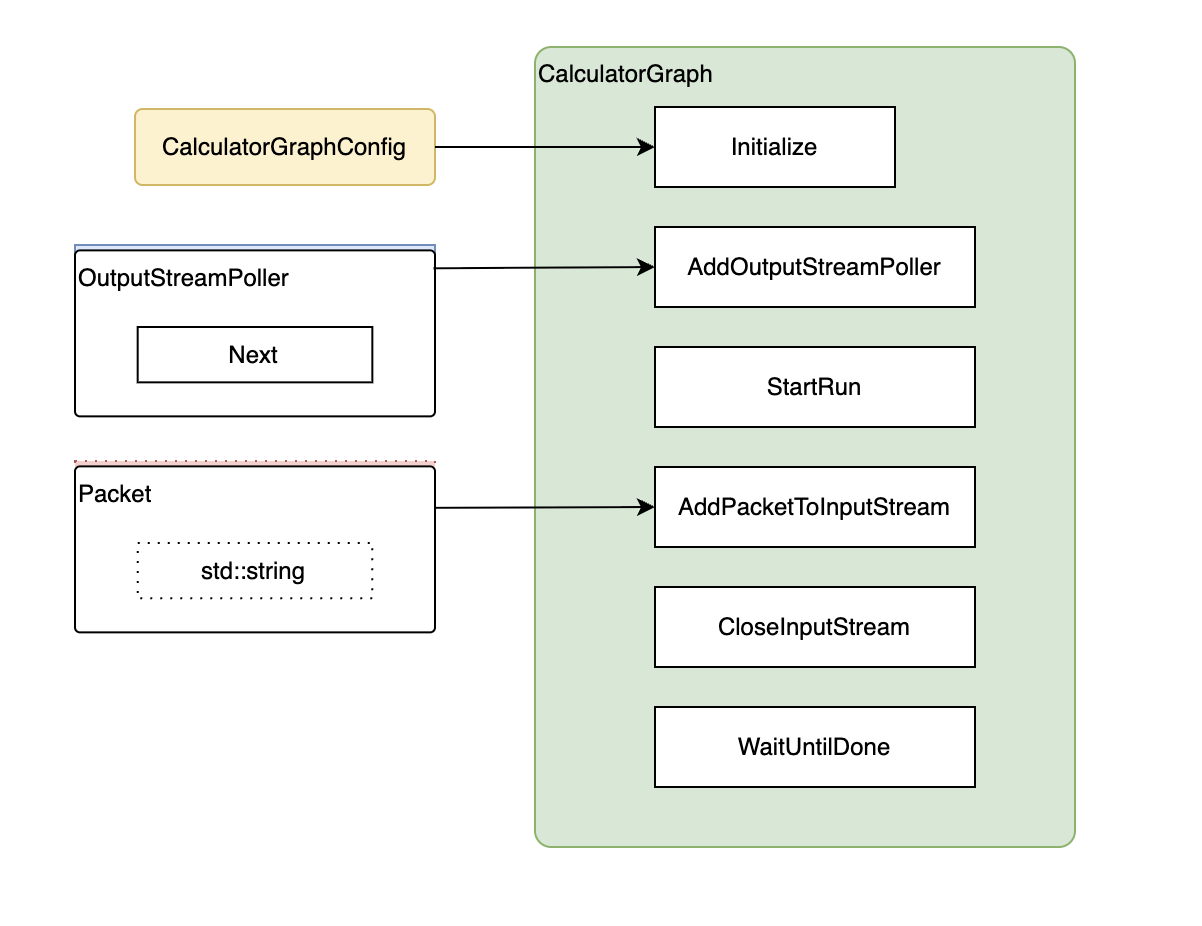
配置加载
配置类通过在字符串中定义,通过CalculatorGraph的Initialize方法将相应的配置转为了对应的c++对象
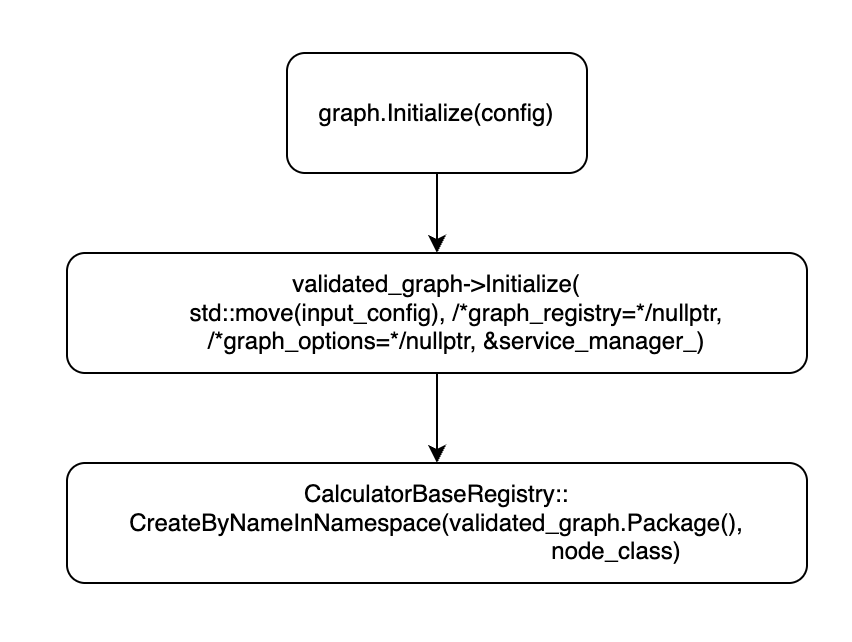
CalculatorBaseRegistry::CreateByNameInNamespace方法实际上是GlobalFactoryRegistry::CreateByNameInNamespace

在mediapipe/framework/deps/registration.h中的class GlobalFactoryRegistry中定义

在Invoke方法中通过之前注册在functions_中的函数来执行具体操作,具体代码实现如下:
template <typename... Args2,
absl::enable_if_t<std::is_convertible<std::tuple<Args2...>,
std::tuple<Args...>>::value,
int> = 0>
ReturnType Invoke(absl::string_view name, Args2&&... args)
ABSL_LOCKS_EXCLUDED(lock_) {
Function function;
{
absl::ReaderMutexLock lock(&lock_);
auto it = functions_.find(name);
if (it == functions_.end()) {
return absl::NotFoundError(
absl::StrCat("No registered object with name: ", name));
}
function = it->second;
}
return function(std::forward<Args2>(args)...);
}
functions_中的函数是在如下图所示的Register方法中注册
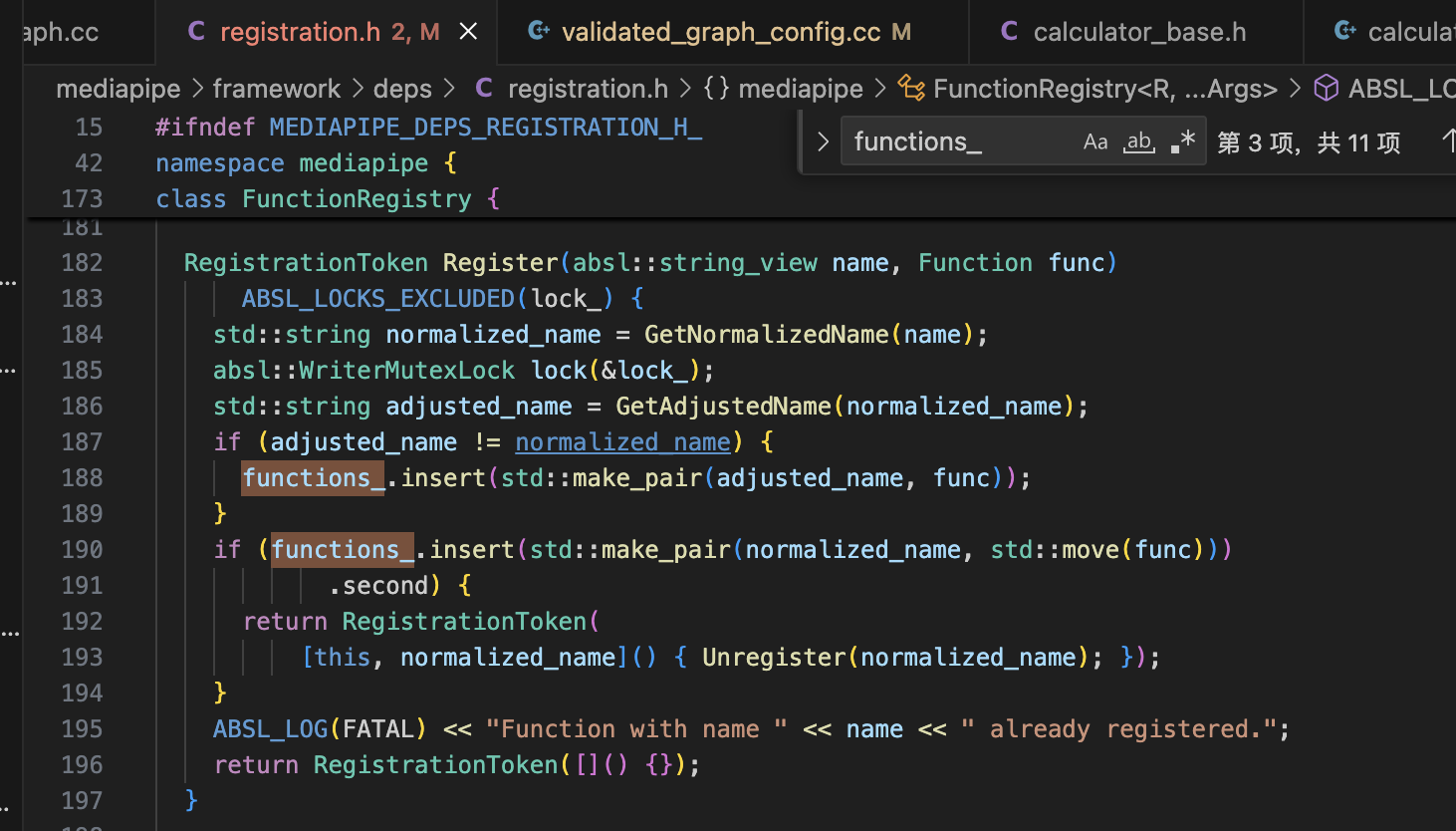
为了追溯到functions_的注册过程,我添加了如下图所示的日志打印

添加的日志打印代码得到了如下所示的打印,可以看到默认注册了如下图的9种类型functions_

另外通过调整一些日志打印位置后发现FunctionRegistry的调用是在main方法之前,调用位置位于.cc文件中,例如Register:PassThroughCalculator是在pass_through_calculator.cc中通过REGISTER_CALCULATOR宏定义来调用的。
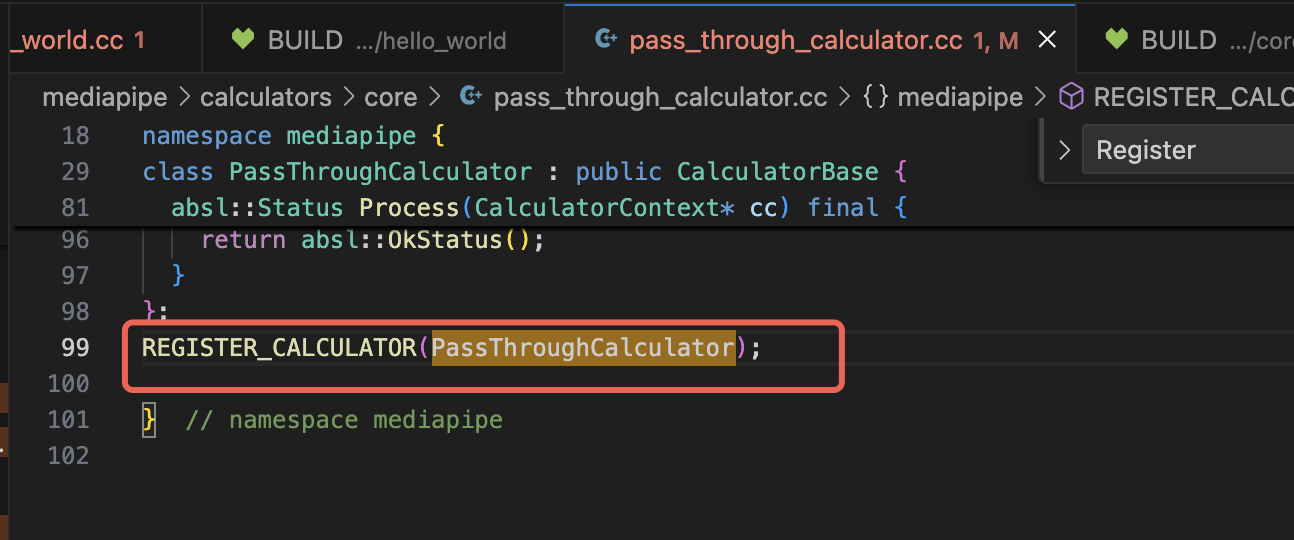
从下二图可看到REGISTER_CALCULATOR通过另一个宏定义REGISTER_FACTORY_FUNCTION_QUALIFIED实现了一个全局static变量的定义,该变量会在程序初始化时被初始化,从而实现了注册。

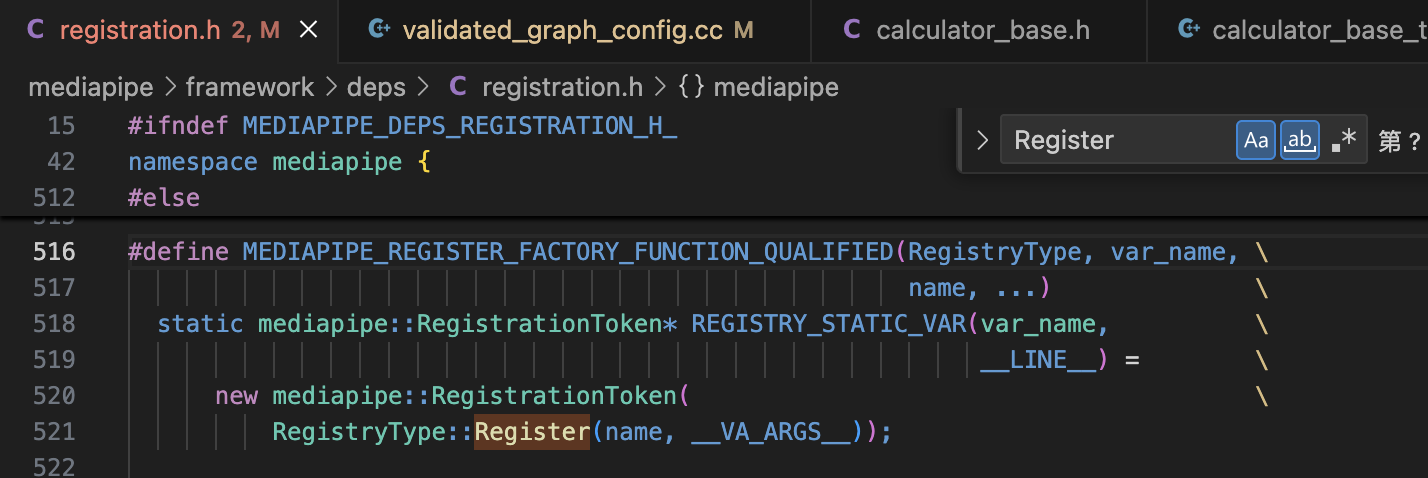
小结
看完了“Hello World! in C++ example”之后就对mediapipe的基本运转流程有了一个基本的了解,但是到目前为止还未设计到跟机器学习相关的内容。下一章我会继续分析安卓端的helloworld。
MediaPipe框架解析(四):android edge_detection详解





















 8860
8860

 被折叠的 条评论
为什么被折叠?
被折叠的 条评论
为什么被折叠?








